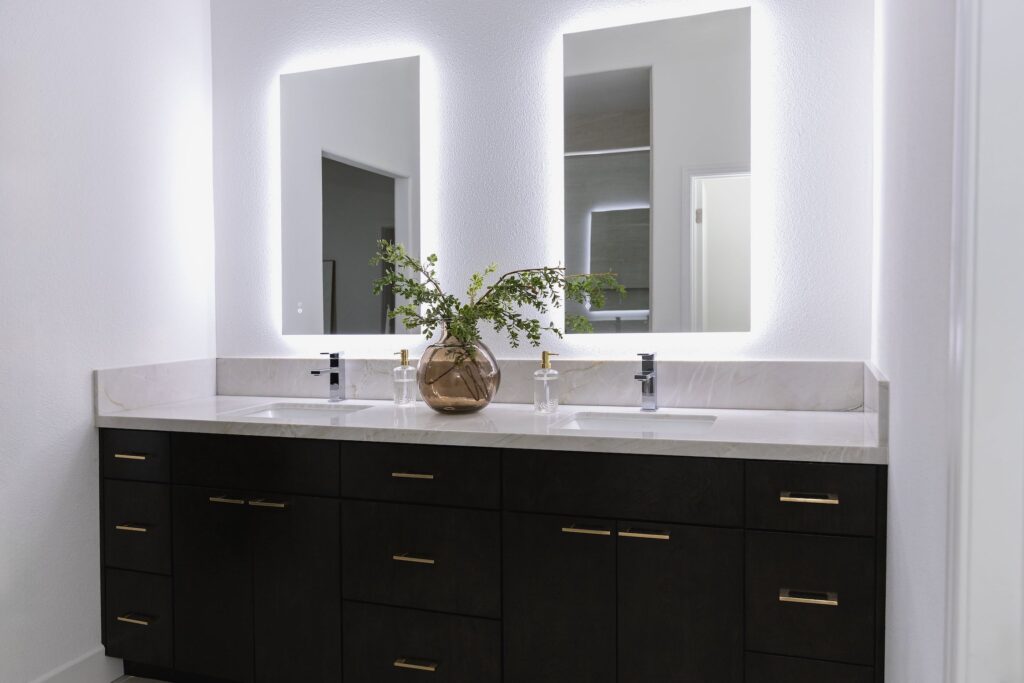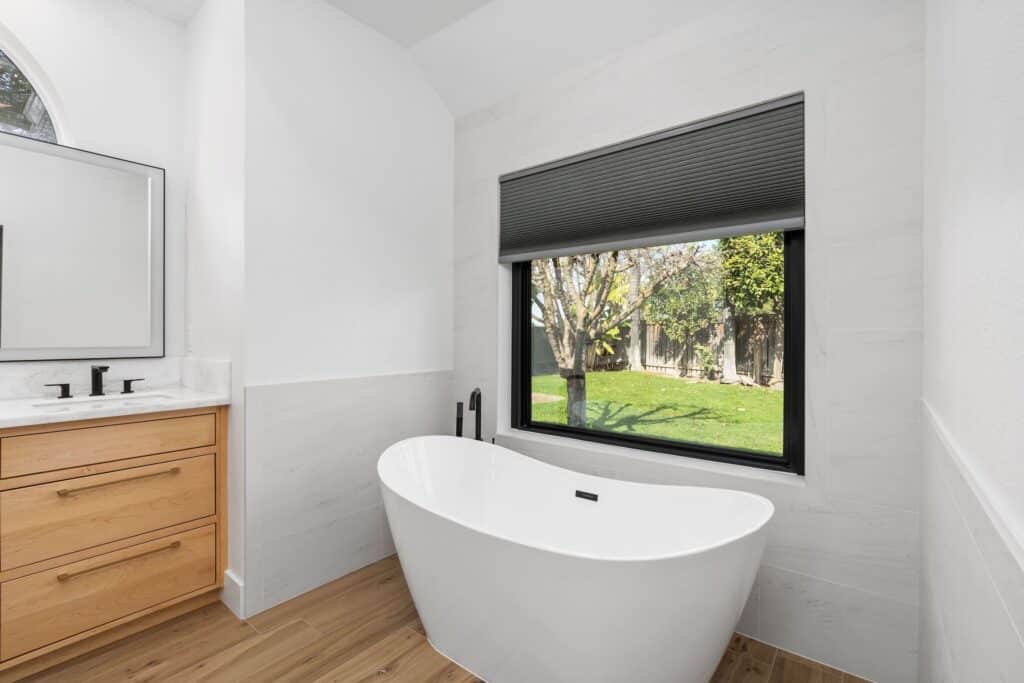When it comes to remodeling your home, many people feel boxed in by the house’s architectural style. But here’s the truth: architecture does shape what works well, but it doesn’t (and shouldn’t) limit your creativity. At Trademark, we believe your home’s bones are a guide, not a rule. Let’s break down how architecture influences design, where it can be helpful, and what to do if your home’s style is different from yours.
What We Mean by “Architecture”
We’re talking about the external and structural style of your home: roof lines, window shapes, building materials, historical elements, ceiling heights, room layouts, framing style, etc. Whether your home is a modern minimal box, a Spanish revival, farmhouse-inspired, or something else, those architectural features carry clues about what looks natural and what might feel jarring.
How Architecture Can Guide Your Design — The Helpful Side
- Cohesion & Flow
When your design echoes some architectural features (e.g. using arches if your home has rounded windows, or incorporating rustic beams if the framing is exposed), the spaces often feel more harmonious. People walk through rooms and feel like every space belongs with the rest. - Material & Texture Choices
The materials the house already uses (stone, brick, wood siding, stucco, etc.) give hints about what textures will sit well next to them. For example, rustic stone exterior might pair beautifully with warm woods or wrought iron indoors. - Lighting & Windows
The size and shape of windows, overhangs, ceiling heights influence what lighting works best. High ceilings may allow for dramatic light fixtures; smaller windows might encourage lighter colors or strategic artificial lighting. - Architectural Period or Style
If your home has historical or period detail (e.g. moldings, wainscoting, arches, original hardwoods), you might lean into those features rather than hiding them. Design that acknowledges heritage tends to feel more timeless than design that fights it.

How Design Doesn’t Have to Be a Slave to Architecture
Here’s the really fun part: it’s totally okay to mix styles, break the “rules,” or bring in a contrast. Just because you have a certain architectural shell doesn’t mean your interior must match it toe-to-toe.
- Juxtaposition can bring character — A modern kitchen in a craftsman home, or clean, minimalist furniture in a rustic cabin, can create dynamic tension that feels intentional and fresh.
- Your lifestyle & preferences matter most — If you love sleek, contemporary lines but live in an older home, choose design elements that feel right to you. Trademark’s job is helping you blend what’s there with what you love, without making your home feel like someone else’s.
- Function beats style — Whatever architectural features exist, your home should serve your life. If a layout feels awkward, it’s okay to redesign, reconfigure, or add elements (with Trademark’s expertise in remodels or additions) that improve flow and functionality.
If you need help deciding on your style, check out this blog!
Trademark’s Approach: Balancing Architecture + Your Design Vision
Here’s how we help you walk the line between respecting architectural cues and designing what you want:
- Free 3D Rendering & Design Services — We help you see possibilities. The renderings allow you to explore how different material, finishes, fixtures or styles look in your actual space before committing.
- In-house Design Expertise — Our designers know trades and construction (not just pretty boards). That means we can help you understand what works structurally as well as aesthetically.
- Selections Made Intentional — We make sure your finishes, fixtures, textures align both with the architecture of your home and with what you love.
- Transparent Estimates & Planning — When you decide to bend architectural norms (for example, opening up walls, changing rooflines, adding windows), we make sure you understand how that impacts cost, permits, and timeline.

Takeaways: What to Think About If You’re Remodeling or Redesigning
- Start by respecting what’s already working architecturally in your home. Don’t fight your roof pitch or windows, but use them as strengths.
- Identify what you absolutely want design-wise (style, colors, vibe) and find ways to blend or contrast intelligently.
- Work with professionals (like Trademark) who understand both construction and design so you get a cohesive outcome, not a mishmash.
- Be open to compromise. Sometimes you tweak architectural features slightly; other times you lean into contrast. Both can be wins.
Final Word
Your home’s architecture is like its story: a foundation of features, style, and structure that can guide design choices. But that story doesn’t control everything. At Trademark, we believe design should feel personal. It should feel like you. Whether your architecture points you in one direction, or you want to head off in another, we’re here to help with craftsmanship, creativity, and clarity.
Schedule your free consultation today and let’s get started!


